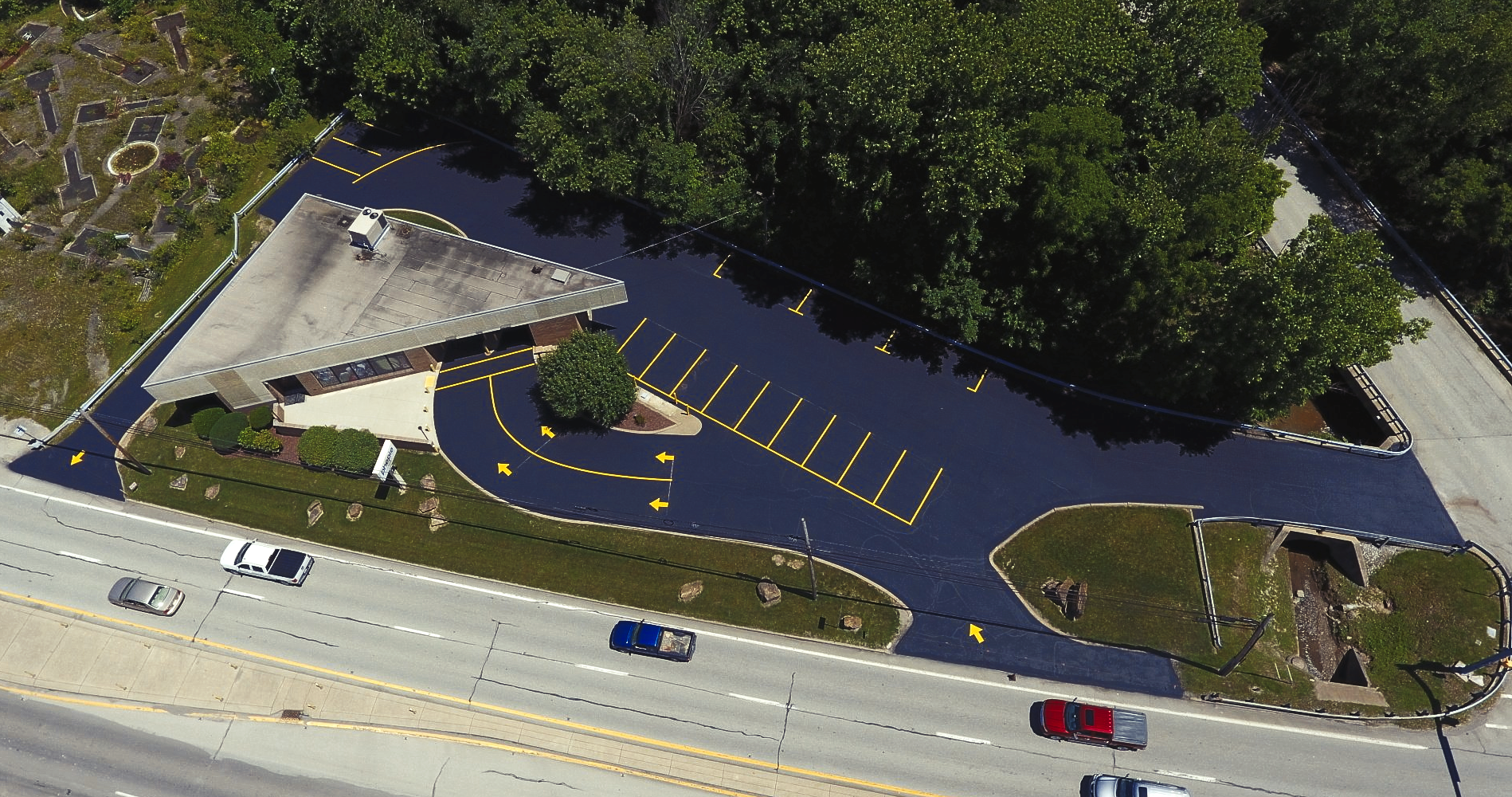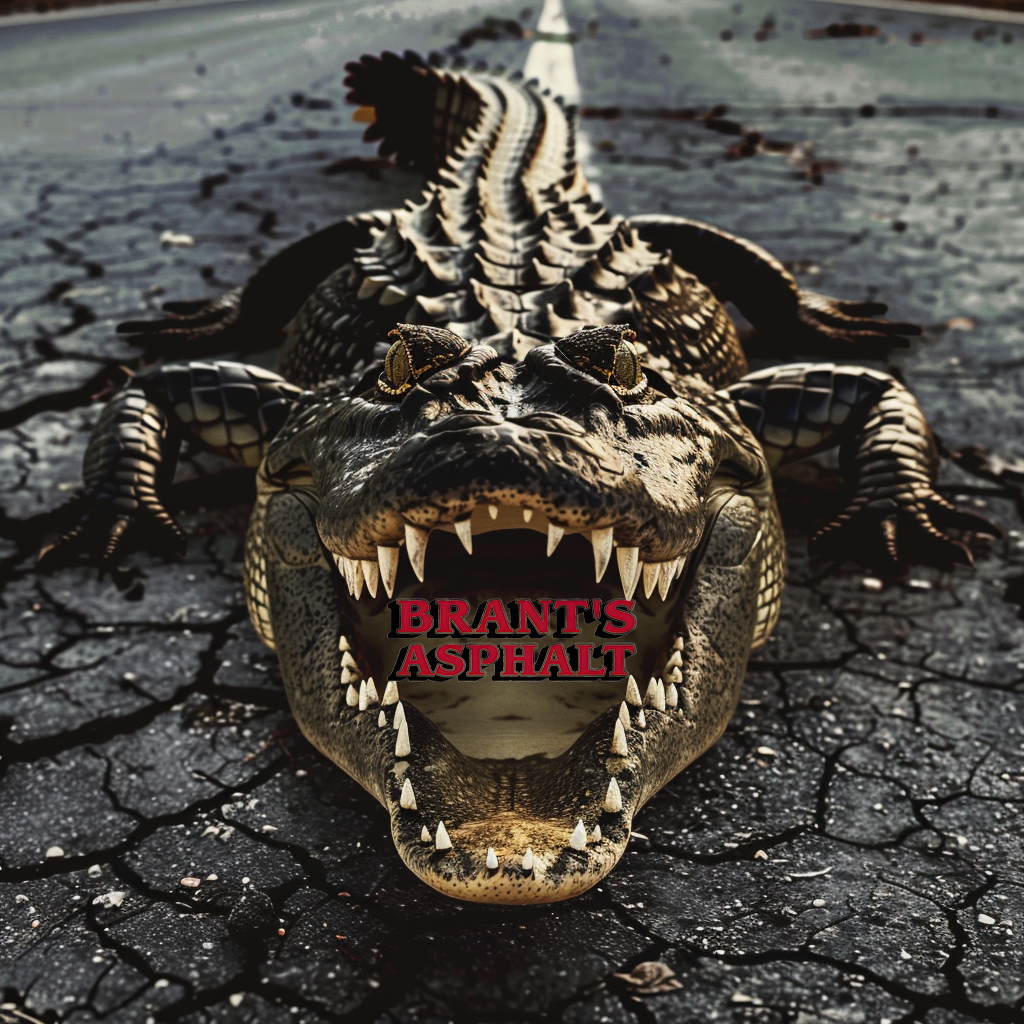Benefits of Sealcoating Asphalt Driveways and Parking Lots

Let's be honest: nothing lasts forever, and asphalt pavement is no exception. Regular maintenance such as sealcoating will add longevity and reduce costs.
Before you can understand how pavement sealer can affect the life of your parking lot, you need to know how asphalt pavement works. Asphalt is a byproduct of refining oil. It is the black stuff that covers the rocks in the pavement. Because it's made from oil, it's very good at keeping water out. It's also flexible and sticky, so it does a great job of keeping all the aggregate together.
Hot mix asphalt pavement not only gives drivers a smooth and safe place to drive and park, but it also keeps the aggregate base and clay/dirt subbase from getting wet. When water gets under the asphalt pavement layer, it weakens the pavement's structure. This is when real problems like potholes, alligator-like cracks, and other damage that needs expensive repairs start to happen.
The problem is that asphalt is not perfect. As it gets older, it starts to break down because of the sun, air, weather, and traffic. The first sign of this is that the nice black color starts to turn grey, and then small cracks that look like "hairlines" start to show up.
This can be avoided with timely and effective sealcoating applications. Sealcoating is the easiest, cheapest, and least disruptive way to protect your pavement compared to other maintenance options like crack sealing, remove-and-replace repairs, and asphalt overlays.
So, what does sealcoating do, exactly?
1. Keeps water from getting into the ground.
Because almost all sealers contain fine aggregate (usually silica sand or Black Beauty boiler slag), sealcoating fills the tiny cracks that are an early sign that asphalt is getting old.
By filling these cracks, you make it less likely that water will get under the asphalt pavement surface. The longer you can keep water out of the pavement, the longer it will last.
2. Slows the damage caused by oxidation.
Even though you can't stop oxidation, which is the breakdown of the asphalt binder caused by air and the sun's UV rays, timely sealcoating can slow it down. Oxidation makes the pavement more brittle, makes it easier for cracks to form and grow, and makes it easier for other kinds of damage to happen as well.
When sealer is put on the pavement surface, it adds a layer of protection on top of the asphalt. This means that the sealer, not the asphalt, is what gets exposed to the air and sun. Sealer should be used every two or three years, depending on where you live and how much traffic you have. This will make your pavement last longer.
3. Keeps oils and gasoline from getting into the asphalt.
Since asphalt is made from petroleum, any petroleum-based liquid that leaks on it will "join" with the asphalt and make the asphalt soft. That makes it possible for the pavement to get damaged even faster and maybe in a bigger way. (If you've ever seen the black spots near the parking blocks in parking lots, which are oil spots, you've seen the damage that leaks can cause.) Sealcoating your pavement will significantly minimize the damage caused by leaks such as this. Note: If your parking lot has any of those black oil spots, you'll need to fix them before you sealcoat it. If oil spots aren't fixed properly, the sealer won't work on those parts of the pavement, and any damage will keep getting worse.
4. Makes it harder to slip.
The "fines," which are small particles about the size of sand, are the first things to wear away as asphalt pavement ages. Using a sealer that has sand in it helps keep the fines in place and also adds more fines to the surface, which makes it easier to walk on.
5. Makes you more flexible.
The surface of an asphalt road is called "flexible," while the surface of a concrete road is called "rigid."
When cars and trucks drive over asphalt pavement, it bends very slightly (on a microscopic level).
When pavement gets old and brittle, it doesn't bend as much, and traffic can cause cracks.
By using sealer on the pavement on a regular basis, you can help it keep its flexibility and slow down the process of getting hard.
6. Enables easier pavement cleaning.
Even though this isn't good for the pavement itself, it can be helpful.
If you don't believe it, take a push broom and sweep your concrete sidewalk. Then, take the same broom and sweep a section of sealcoated pavement.
Where the concrete pulls on the broom, the sealed pavement makes it easy for the broom to slide over.
7. Extends pavement life.
All of the things that sealcoating does to a pavement add up to make the pavement last longer.
When properly cared for, a well-built asphalt road can last much longer than 15 years.
Sealcoating is an important part of keeping the road/parking lot/driveway in good shape.
8. Saves you money!
Our parking lot is probably the most expensive thing we've bought for the property, so anything you can do to make it last longer and cut down on its total cost of ownership helps you get more for your money.
Research has shown that a properly maintained 10,000-square-foot parking lot can save a property manager $120,000 over the course of 15 years. This is compared to the same parking lot that is not maintained.
But there is one more benefit to sealcoating, and that is "curb appeal," or the way the road looks.
You want your property to look its best, whether it's for business tenants, customers, or people who live in your apartment building, condo, or homeowners' association. Sealcoating gives your parking lot a new, black, clean look. When you add new pavement markings, it looks even better.
Most of the time, the parking lot is the first thing people see when they walk up to a building.
So, if you regularly sealcoat and paint lines on your property, it will make a good first impression.
One of the easiest and least expensive ways to improve the look of your property is to sealcoat and stripe.
Worth noting:
Sealcoating your pavement can help it in many ways, but it's important to know that it's not a structural change.
Sealcoating your pavement is like painting your house: it keeps it safe and makes it look better, but it doesn't help it stay together.

Expert Commercial Pavement Maintenance: Asphalt Resurfacing, Milling, Sealcoating, Line Striping, and Patching Services.
BROWSE OUR WEBSITE
CONTACT INFORMATION
Location: 217 Luxor Rd. Latrobe Pa 15650
Phone: (724) 832-8451
Fax: (724) 832-8451
Email: brantsasphalt@comcast.net
OUR LOCATION
All Rights Reserved | Brant's Asphalt LLC | HIC# PA 000636 | Website Designed by Blue Crocus Solutions


